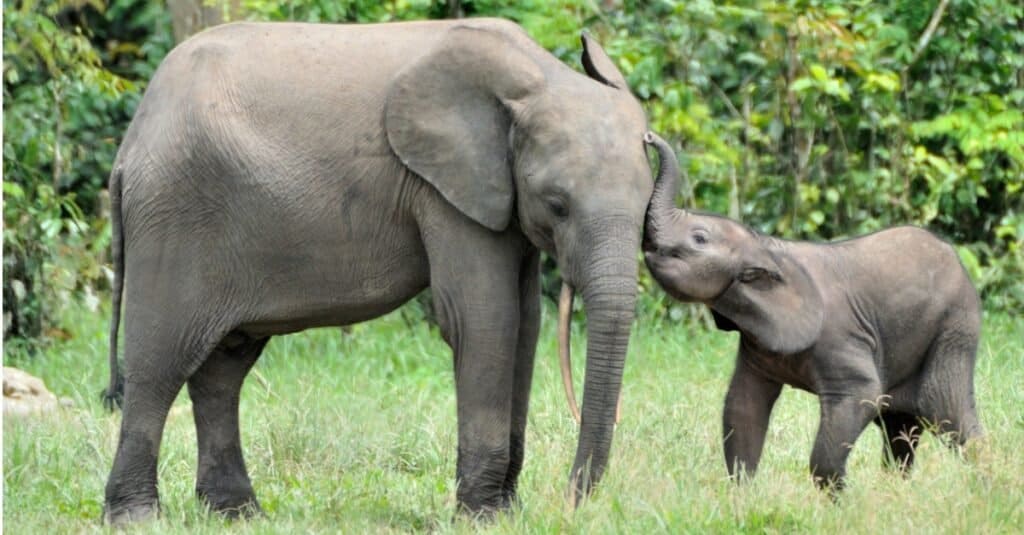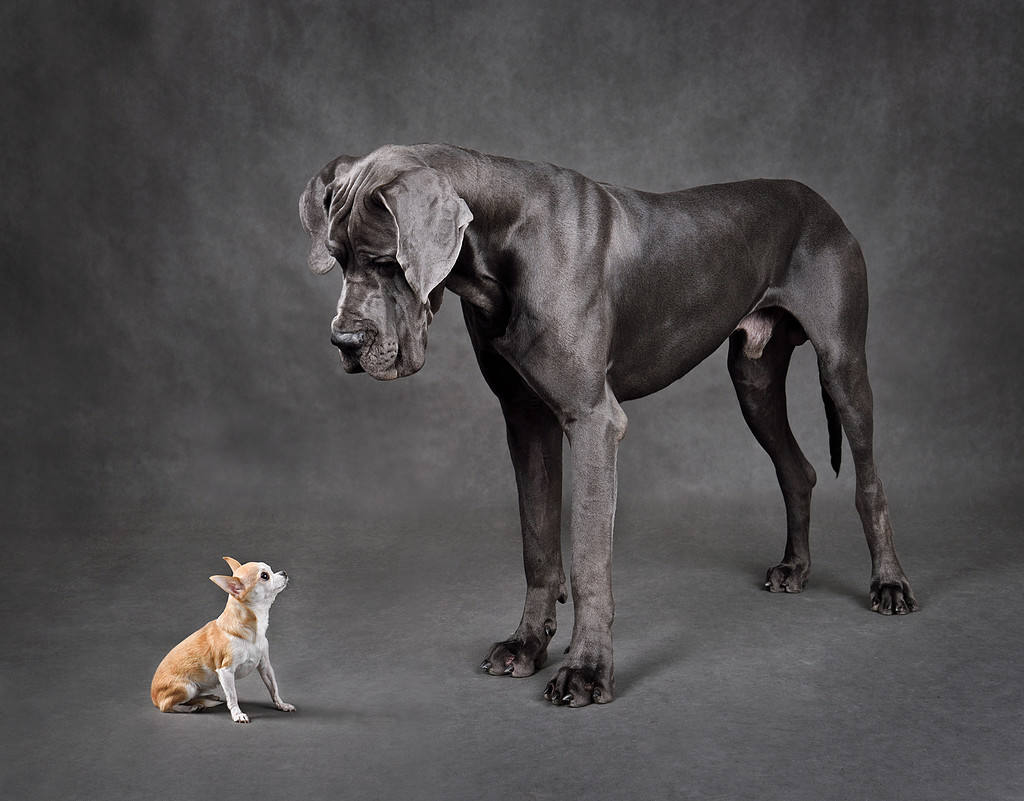Bigger isn’t always better, but it might be when it comes to lifespan! From the tiny mayfly that lives just 24 hours to enormous whales that survive for hundreds of years to the immortal jellyfish that can live, well, forever, the life expectancy of animals differs dramatically. But is lifespan affected by size? Here we take a look at whether size affects longevity and if bigger animals live longer than small ones — and why.
Do Bigger Animals Live Longer?

Bowhead whales can grow up to 60 feet long and weigh over 200,000 pounds.
©Bering Land Bridge National Preserve, CC BY-SA 2.0, via Wikimedia Commons – Original / License
While there are always exceptions to the rule, bigger animals live longer than small ones on average. Researchers have found that there is a positive correlation between lifespan and body mass. For example, the bowhead whale, which can weigh over 200,000 pounds, can live over 200 years. These whales have even been discovered with fragments of 19th-century harpoons embedded in their blubber. In contrast, the white-footed mouse, which weighs about 1 ounce, has an expected lifespan of around one year.
Mammals aren’t the only place this dichotomy exists. The tiny ruby-throated hummingbird has a life expectancy of 3-4 years. In contrast, the ostrich can live up to 40 years. While the sizeable Greenland shark can survive over 300 years, the seven-figure pygmy goby (which weighs just 0.00015 ounces) has an average lifespan of 59 days. A 30-foot-long green anaconda can live to be 20-30 years old, while the world’s tiniest snake, the Barbados threadsnake, generally don’t live past 3 years.
But Why Do Bigger Animals Live Longer?

African
elephants
can live 60 years or more.
©iStock.com/USO
There are a few factors that affect the lifespan of animals and result in bigger animals living longer. The first is obvious when you consider the food chain. Generally, smaller animals are at higher risk of predation. As a result, they die earlier and the average lifespan is shortened.
These smaller animals also tend to reproduce more rapidly than larger ones to ensure population stability. Animals need to reach maturity as quickly as possible to reproduce, so the life cycle of these smaller creatures is expedited. This also affects gestation duration: In placental mammals, the length of gestation correlates with the animal’s body weight.
Scientists have also considered metabolism speeds as a factor in lifespan. Larger animals tend to have slower metabolisms than small ones, which could put less stress and wear and tear on the animal’s cells. However, marsupials like opossums throw a wrench into this theory. They have very low metabolisms but also have short lifespans. For example, the Virginia opossum has an average lifespan of just two years — even shorter than some rats and mice.
With that being said, metabolism may play a part when temperature is taken into account. The body temperature of cold-blooded animals depends on their environment, so animals in colder temperatures produce less heat and have lower metabolisms. For example, the Greenland shark lives in the Arctic Ocean and can live in waters as cold as 28.4°F for centuries.
Exceptions to the Rules

Naked mole rats have the second-most babies of any mammal after the tailless tenrec.
©Neil Bromhall/Shutterstock.com
There are always exceptions to the rule, and one big one is the naked mole rat. Naked mole rats weigh just 1-2 ounces and measure only 3 inches long, but can live over 30 years. They also have extremely long pregnancies for their size, with gestation averaging 70 days. In contrast, the similarly sized house mouse has a gestation period of just 20 days.
Naked mole rats also have some of the largest litters of any mammal and can have up to 30 babies per litter, with five litters per year. When lifespan is taken into account, these large litter sizes seem unnecessary to support a population. However, this anomaly correlates with the naked mole rat’s colony structure. Each colony has one “queen,” and she is the only female that reproduces, making her solely responsible for procreation. Interestingly, naked mole rats’ fertility does not decrease as they age, unlike other mammals.
Another exception can be found within species. Smaller dog breeds typically dramatically outlive their larger counterparts. For example, chihuahuas can live up to 20 years, while the hefty Newfoundland has an average lifespan of 8-10 years. Researchers suspect this may be linked to a hormone called insulin-like growth factor 1 (IGF-1). IGF-1 encourages cell growth, subsequently accelerating aging rates. Animals (and people) with higher IGF-1 hormone levels have a higher risk of cancer and shorter lifespans.
What We Can Learn About Lifespan

Great Danes can be up to 32 inches tall, while chihuahuas only reach around 9 inches.
©eAlisa/iStock via Getty Images
Why is any of this important? If scientists can identify what causes animals like naked mole rats or smaller dogs to live longer, they can apply that knowledge to human medicine. Identifying genes or hormones that slow the aging process or are resistant to cancers can help extend the human lifespan and lead to happier, longer lives.
A Quick Look at Animal Size and Lifespan
| Animal | Size | Average Lifespan |
|---|---|---|
| Blue whale | 330,000 pounds | 80-90 years |
| Bowhead whale | 200,000 pounds | 200 years |
| African elephant | 13,000 pounds | 60-70 years |
| Hippopotamus | 3,300-4,000 pounds | 40-50 years |
| Greenland shark | 2,200 pounds | 300+ years |
| Bison | 2,000 pounds | 15-25 years |
| Green anaconda | 550 pounds | 20-30 years |
| Ostrich | 140-320 pounds | 30-40 years |
| White-footed mouse | 1 ounce | 1 year |
| Hummingbird | 0.07-.85 ounces | 3-5 years |
| Barbados threadsnake | 0.02 ounces | 3-4 years |
| Seven-figure pygmy goby | 0.00015 ounces | 59 days |
The photo featured at the top of this post is © Eric Isselee/Shutterstock.com
Thank you for reading! Have some feedback for us? Contact the AZ Animals editorial team.







